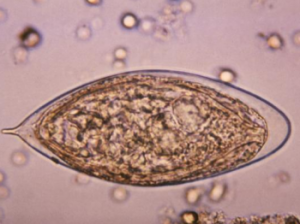In a follow-up to a report in May concerning a schistosomiasis cluster reported in France, the US Centers for Disease Control and Prevention (CDC) reports Thursday that in June 2014, the French Institute for Public Health Surveillance established a screening program for people that reported contact with the Cavu River during 2011-2013. Since then 54 cases have been reported among French residents.

Image/CDC
All of the travelers were exposed to the freshwater in the Cavu River on the island of Corsica (France) and had not traveled to other areas where schistosomiasis is known to occur. Including the initial cluster reported earlier this year (6), that brings the total to 60 cases since 2011. The species of the parasite implicated is Schistosoma haemotobium.
There are four main Schistosoma species that infect humans. S. mansoni, S. japonicum, and S. mekongi all cause intestinal schistosomiasis. S. haematobium causes urinary schistosomiasis. Urinary schistosomiasis is often chronic and can cause pain, secondary infections, kidney damage, and even cancer.
Schistosomiasis haematobium is endemic to over 50 countries in Africa and the Middle East. It is also occasionally seen in Western Asia. According to a paper published in PLoS Neglected Tropical Diseases in March 2013, more than 90% of the roughly 200 million cases of schistosomiasis occur in Africa, of which approximately two-thirds are caused by Schistosoma haematobium.
More recently, Charles King and his colleagues have suggested that the number of cases of S. haematobium may be much greater than previously believed, even possibly double or triple that of earlier prevalence estimates . If confirmed, urogenital schistosomiasis may represent the most common infection or even adverse health condition in sub-Saharan Africa.
For more infectious disease news and information, visit and “like” the Infectious Disease News Facebook page


4 thoughts on “France: 60 people exposed to schistosomiasis since 2011 linked to Corsica river”